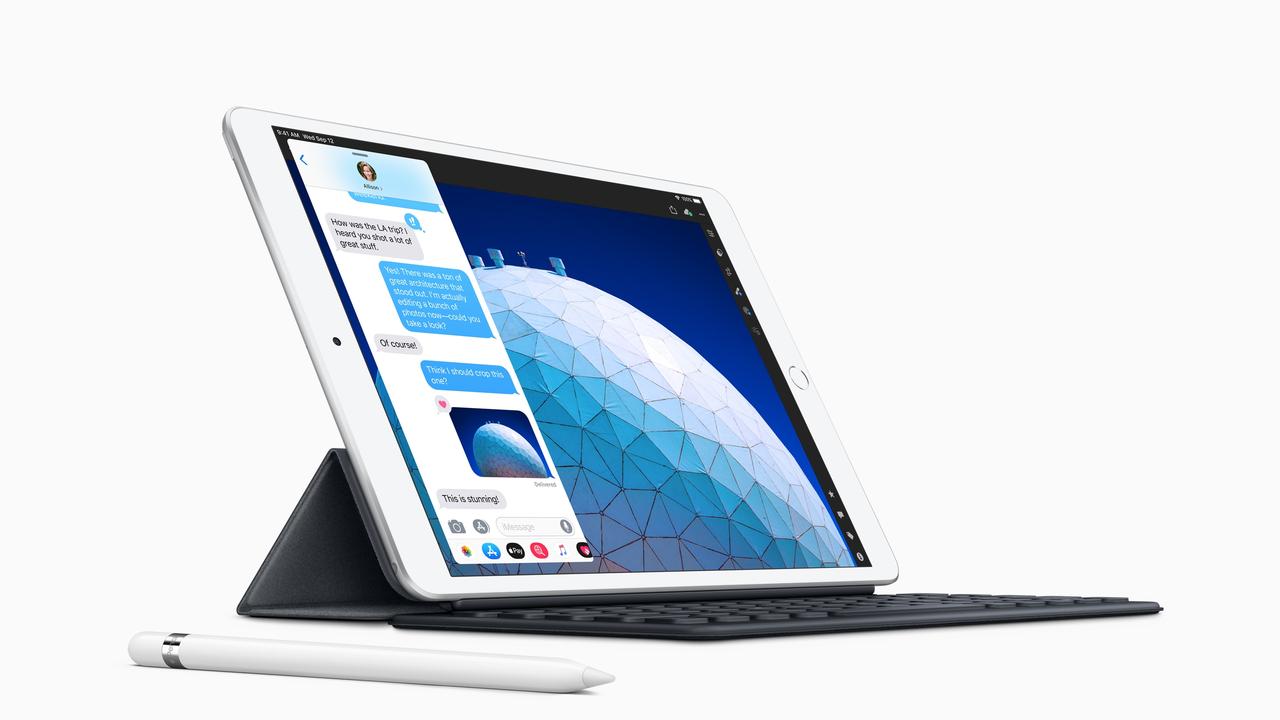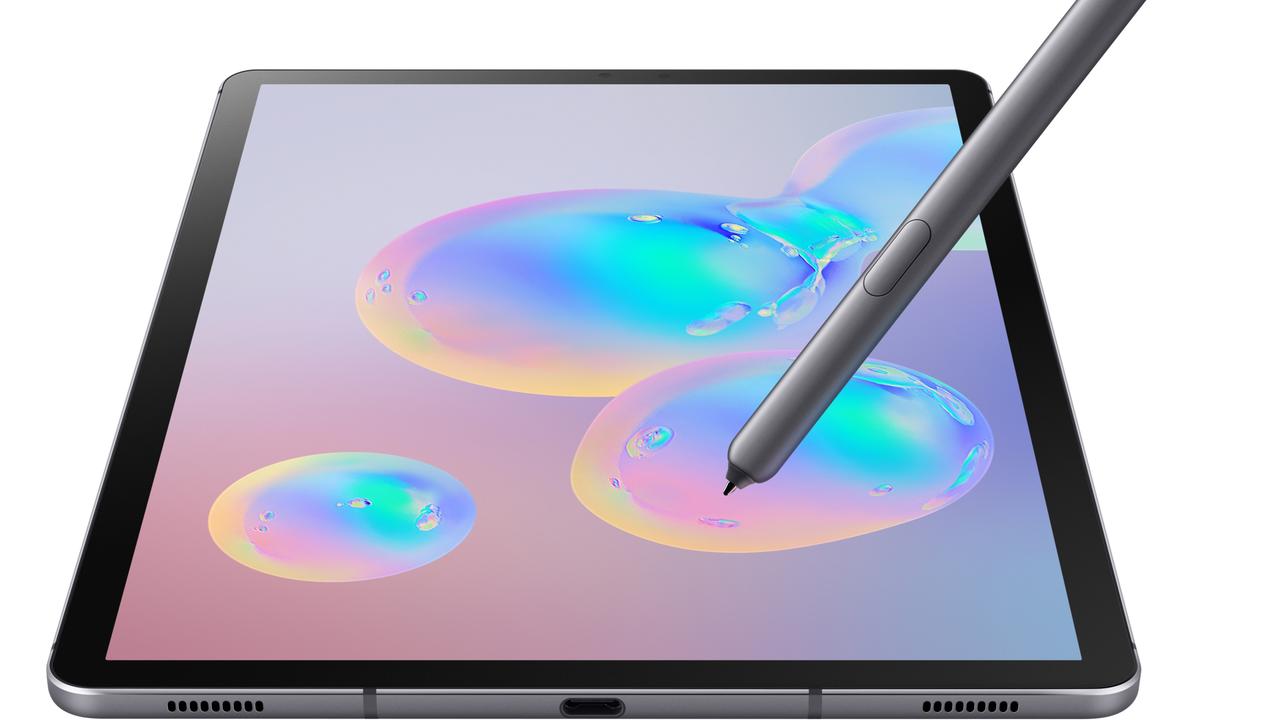The best laptops for uni students and office workers might not actually be a laptop at all
It’s a question that’s been asked for almost a decade, and as the technology catches up to the vision for it, we might finally have an answer.
It has become a common sight in university lecture halls and tutorials in the past 10 years — the glow of individually illuminated Apple logos shining from the rear of MacBook laptops.
The MacBook Air and Pro laptops have been favourites on university campuses despite often costing more than competitors with the popularity driven by cultural clout and durability.
Things like easy portability and all-day battery life made the MacBook Air a particular standout.
That’s beginning to change, however.
Advances in mobile computing, particularly in the tablet space, mean the best laptop for uni students might not even be a laptop anymore, and Apple isn’t the only one in the race.
While some specialities like engineering and architecture require fully fledged computers to run specialist rendering programs, students now have a plethora of options, at various price points, that can handle all the traditional note taking, presentations and essay writing demands of most university students. in easier and more intuitive ways.
Tablets are also much better to read on, and with accompanying pen inputs, completing set readings or reports while highlighting the important parts is as easy as it is on paper.
Below are three different options from different brands at three different price points, but one thing they all share is their compact portability, long battery lives, and their ability to use a touchscreen, keyboard and pen to give you the flexibility and capability to complete pretty much any task you’d expect from your laptop, and more.
APPLE IPAD ($529) + SMART KEYBOARD ($235) + APPLE PENCIL ($145) – $963

It’s the question that has been asked since the iPad hit the market in 2010: Can the iPad replace your laptop?
For the most part, the answer has been no.
The performance limitations, lack of support for multiple inputs, and Apple’s closed garden app ecosystem poked plenty of holes in the idea.
Recently, the pendulum has begun to swing in the other direction.
The biggest change has obviously been the introduction of iPadOS, making the iPad more like using a computer than the iPhone-focused iOS that previously powered it.
Highlights include improved multi-tasking features that let you quickly switch between or run separate apps side-by-side.
The files app is also updated, and at long last the iPad can finally support external USB drives. The Safari browser has also changed to load the desktop version of a website’s page rather than the mobile version, and iPadOS also adds a hidden but surprisingly useful screenshot feature that allows you to save an entire web page (not just what’s displayed on the screen). This is particularly useful when combined with the pencil as you can quickly screenshot a page, mark up relevant information and save it or send it on to whoever is going to do the majority of the work on a group assignment (hopefully not you this time).
The smart keyboard adds a protective cover as well as a keyboard, and while this was previously available from third-party accessory makers, Apple’s keyboard doesn’t require charging and connects instantly rather than relying on sometimes finicky Bluetooth.
There’s also cellular options on iPad that (for an extra cost of course) you can add a SIM card to your iPad that gives you mobile data access without having to rely on shoddy cafe Wi-Fi when you’re trying to submit an assignment at the last minute.
The entry-level 10.2-inch iPad only comes with 32GB of storage at its stock configuration, which is not much, but is passable given you don’t really need to store things on the device itself anymore. Using a cloud suite like Google Docs or Office 365 means you can work on documents over the internet from anywhere without having to keep them on your actual device.
It should be able to handle the majority of your needs, but if you want more power you could also look at the more expensive iPad Pro. Keep in mind once you add the accessories you’re approaching real laptop money. But some companies will throw some of these in for you.
SAMSUNG TAB S6 ($1099) + BOOK COVER KEYBOARD ($199) – $1298

The Samsung Galaxy Tab S6 is a premium Android tablet, one of the few Android tablets that’s actually decent (which you’d hope for the price).
Yes, it’s more expensive than the iPad (though comparable in price to the iPad Pro it more closely competes with), but you get more for your money too. The 10.5-inch screen is slightly bigger than the iPad's while rivalling it for colour vibrancy and accuracy.
Samsung is also a bit more generous with what’s included as well. Unlike the iPad’s Apple pencil, the Samsung S-Pen is included in the box. Some new features added since the early days of the S-Pen you may have used before on a Galaxy Note smartphone mean it now requires charging, which it does wirelessly off the back of the tablet (the Apple pencil recharges by plugging into the lightning port, either on your iPad or through the included adaptor for a cable). The S-Pen also has a few nifty features that can prove useful, including air gestures to control video playback and camera modes and use as a presentation clicker for controlling presentations. Like the iPad will do with an iPhone, you can synch your Tab S6 up with a Galaxy smartphone to make your notifications, calls and other info accessible from either device.
While Apple has given iPad its own special operating system, Samsung has taken a slightly different tack.
Unlike Apple, it doesn’t have total control over the Android software developed by Google, but it does have a workaround.
The Samsung DeX mode, as it does on some of the company’s better smartphones, turns the Tab S6 into something more closely resembling a traditional computer.
Combined with the book cover keyboard (or any Bluetooth mouse), you can navigate using a cursor rather than the touchscreen, as well as open apps in their own windows, allowing you to have several on the go at a time.
Unfortunately, DeX mode is not yet as good as it could be, and it functions as more of a bridge to the desktop than an actual desktop environment. It still provides the functionality and multi-tasking you’re used to from a laptop, but if you’re looking for something a little closer, it might be worth looking at what is technically a two-in-one laptop that’s also one of the best of the bunch.
MICROSOFT SURFACE PRO 7 ($1249) + SIGNATURE TYPE COVER ($249) + SURFACE PEN ($139) – $1638

It’s taken a few years, but Microsoft is finally starting to get its Surface house in order. The line aimed to give Microsoft the same software and hardware integrationas its chief rival Apple, but the company mimicked its rival a little too closely. Its first attempt at a tablet was bogged down with a less capable version of Windows in the same way iOS held back the iPad.
Being new to hardware, Microsoft also had a few teething issues with build quality and reliability.
Now they’re starting to figure it out.
The Microsoft Surface Pro 7 is definitively a “tablet that can replace your laptop” because in essence it is a laptop. It runs a full Windows operating system, has a 12.3-inch display and multiple USB and SD card ports. Unlike the iPad and Tab S6, it also has a built-in adjustable kickstand, while the others rely on the keyboard covers for support when in “laptop mode”.
The Surface type cover keyboard is more expensive than the others, but it is also the best to use. The Surface pen is also an admirable performer but, like Apple’s pencil, is not included in the box. It also isn’t rechargeable, requiring a AAAA battery to be changed every now and then. Microsoft claims one battery will last you 12 months.
In addition to its high price tag, the Surface Pro is also let down by being a bit more cumbersome and a lot heavier than the others.
It also requires its own special charger, whereas the iPad and Tab S6 can charge from the lightning or USB-C cable you already use for your phone, saving space in your bag.
But if you’re hesitant to jump all the way in to the tablet form factor, the Surface Pro 7 is a decent bridge. In that area, it also has competition from the likes of Dell, HP, Lenovo, Asus, Acer and pretty much every other company that makes the Windows laptops of old.
Are you ready to ditch your laptop for a tablet? Let us know what tech you’re counting on to get work done in 2020 in the comments below.



